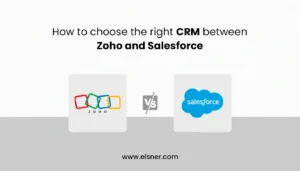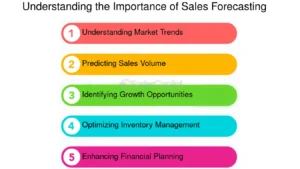Unlocking the Power of Sales Analytics to Boost Your Business
Sales analytics has become an indispensable tool for modern businesses seeking to maximize their sales performance. By leveraging the data collected throughout the sales process, companies can uncover valuable insights into customer behavior, sales trends, and performance metrics. This article will explore how sales analytics can enhance your sales strategy, improve decision-making, and ultimately drive growth.
What Is Sales Analytics?
Sales analytics refers to the process of collecting, analyzing, and interpreting sales data to inform business decisions and optimize the sales process. It provides a comprehensive view of sales activities, helping businesses understand what drives success, what areas need improvement, and where opportunities for growth lie.
Key Benefits of Sales Analytics:
- Improved Decision-Making: Data-driven insights allow sales teams to make more informed decisions based on trends and patterns rather than intuition.
- Enhanced Sales Forecasting: By analyzing past sales data, businesses can accurately forecast future sales, helping teams set realistic goals and expectations.
- Optimized Sales Processes: Sales analytics helps identify bottlenecks and inefficiencies, allowing businesses to refine their sales processes and close deals faster.
- Better Customer Insights: Sales analytics provides a deeper understanding of customer preferences and behaviors, leading to more personalized and effective sales strategies.
Types of Sales Analytics
To make the most of your sales data, it’s essential to understand the different types of sales analytics and how they can benefit your business.
1. Descriptive Analytics
Descriptive analytics looks at past sales performance to identify patterns and trends. It provides a historical view of sales data, helping businesses understand what happened and why. This type of analysis is essential for assessing the overall health of your sales pipeline.
2. Predictive Analytics
Predictive analytics uses historical data and advanced algorithms to forecast future sales trends. By analyzing past performance, businesses can predict customer behavior, identify high-potential leads, and allocate resources more effectively.
3. Prescriptive Analytics
Prescriptive analytics goes beyond predicting future trends by recommending specific actions based on the data. It suggests the best course of action for improving sales outcomes, whether that’s adjusting pricing strategies or reallocating sales resources.
4. Diagnostic Analytics
Diagnostic analytics delves into the reasons behind sales outcomes. It answers the “why” behind performance metrics, helping businesses identify the root causes of success or failure.
How to Use Sales Analytics to Improve Your Strategy
Harnessing the full potential of sales analytics can significantly boost your sales performance. Here’s how you can apply sales analytics to enhance your sales strategy:
1. Set Data-Driven Sales Goals
Use historical sales data to set realistic and achievable sales goals. By analyzing past performance and identifying trends, you can establish clear targets that are both ambitious and grounded in data.
2. Identify High-Value Leads
Sales analytics can help you identify the leads most likely to convert, allowing your team to prioritize their efforts. By examining factors such as lead source, engagement level, and demographics, you can allocate resources to leads with the highest potential for success.
3. Optimize the Sales Funnel
Analytics can reveal bottlenecks in the sales process that slow down deal closures. By identifying where prospects drop off, you can make improvements to your sales funnel, streamline communication, and close deals more efficiently.
4. Personalize Sales Interactions
Sales analytics provides valuable insights into customer behavior, preferences, and pain points. Armed with this data, your sales team can tailor their outreach to each individual prospect, delivering personalized experiences that resonate with their needs.
5. Monitor Sales Performance
Track the performance of your sales team in real-time using analytics dashboards. This allows you to identify top performers, pinpoint areas for improvement, and provide coaching to help your team achieve their full potential.
Common Sales Metrics to Track
To get the most out of sales analytics, it’s important to track the right metrics. Here are some of the most common sales metrics that businesses should monitor:
- Sales Growth: The percentage increase or decrease in sales over a specific period.
- Lead Conversion Rate: The percentage of leads that convert into paying customers.
- Average Deal Size: The average revenue generated per closed deal.
- Sales Cycle Length: The amount of time it takes to close a deal from the initial contact to final sale.
- Customer Acquisition Cost (CAC): The cost of acquiring a new customer, including marketing and sales expenses.
- Customer Lifetime Value (CLTV): The total revenue a business can expect to earn from a customer over the duration of their relationship.
Tools to Simplify Sales Analytics
Sales analytics can be overwhelming without the right tools to manage and interpret data. Fortunately, several platforms are designed to simplify the process and make it more accessible for businesses of all sizes.
1. HubSpot Sales Hub
HubSpot Sales Hub offers a comprehensive suite of tools for managing sales data and analytics. With built-in reporting dashboards, it allows teams to track performance metrics, monitor deal stages, and forecast future sales trends with ease.
2. Salesforce
Salesforce provides powerful analytics tools that allow businesses to track sales performance, customer data, and pipeline health. With AI-powered insights, Salesforce can help teams predict customer behavior and identify growth opportunities.
3. Zoho Analytics
Zoho Analytics is an advanced data analytics platform that integrates seamlessly with Zoho CRM. It provides customizable dashboards, real-time reporting, and AI-powered insights to help businesses make data-driven decisions.
4. Pipedrive
Pipedrive offers sales teams a visual pipeline management tool with integrated analytics features. It tracks key sales metrics like deal progress, lead conversion, and performance forecasting, all within an easy-to-use interface.
5. Tableau
Tableau is a powerful data visualization tool that helps businesses analyze and interpret complex sales data. Its interactive dashboards and reporting capabilities provide valuable insights into sales trends and performance.
Conclusion: The Future of Sales Lies in Analytics
In today’s data-driven world, sales analytics is no longer a luxury—it’s a necessity. By harnessing the power of analytics, businesses can optimize their sales processes, predict future trends, and ultimately drive growth. The key to success is choosing the right tools and metrics to monitor and continuously refine your sales strategy based on data-driven insights.
FAQs
What is sales analytics?
Sales analytics is the process of analyzing sales data to gain insights into sales performance, customer behavior, and trends. It helps businesses make data-driven decisions to optimize their sales strategies.
How can sales analytics improve my sales strategy?
Sales analytics provides valuable insights into lead conversion, sales performance, and customer behavior. By leveraging these insights, businesses can refine their sales processes, target high-potential leads, and increase overall sales efficiency.
What are the key metrics to track in sales analytics?
Key metrics to track include sales growth, lead conversion rate, average deal size, sales cycle length, customer acquisition cost (CAC), and customer lifetime value (CLTV).
What tools are best for sales analytics?
Popular sales analytics tools include HubSpot Sales Hub, Salesforce, Zoho Analytics, Pipedrive, and Tableau. These tools provide businesses with the insights needed to optimize their sales strategy.
How does predictive analytics help in sales?
Predictive analytics uses historical data to forecast future sales trends and customer behavior. This helps sales teams identify high-potential leads, allocate resources effectively, and set realistic sales goals.
Top Tools to Simplify and Scale Your Sales Analytics
- HubSpot Sales Hub: A comprehensive platform offering analytics tools, performance tracking, and forecasting capabilities for data-driven sales decisions.
- Salesforce: An industry-leading CRM with AI-powered insights, advanced reporting, and customizable dashboards to help businesses stay ahead of sales trends.
- Zoho Analytics: Integrates with Zoho CRM to provide real-time sales data and actionable insights through its customizable dashboards and AI-powered analytics.
- Pipedrive: A visual sales pipeline management tool that tracks deal progress, lead conversion, and sales forecasts with ease.
- Tableau: A powerful data visualization tool that offers in-depth sales analytics through interactive dashboards and visual reports.
Keywords: sales analytics, sales metrics, predictive analytics, CRM tools, sales forecasting, data-driven sales strategy










